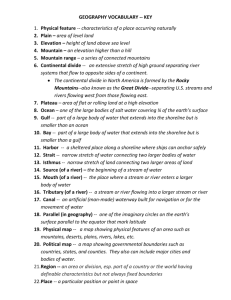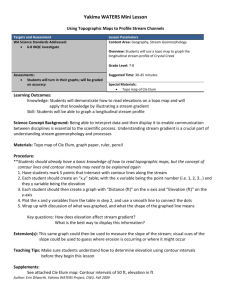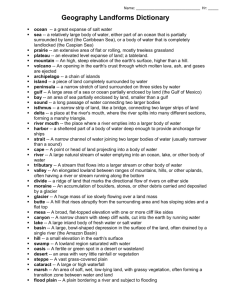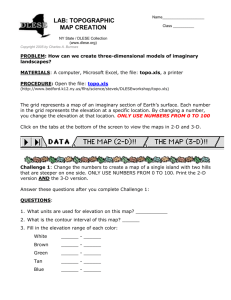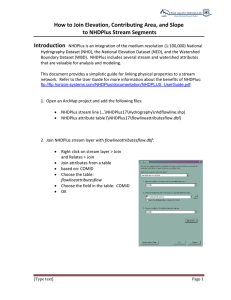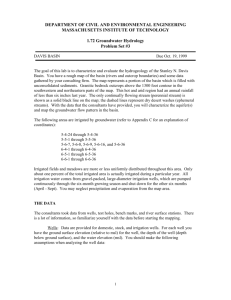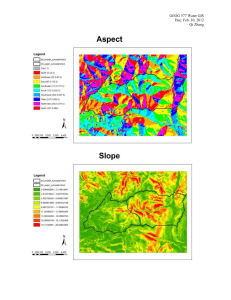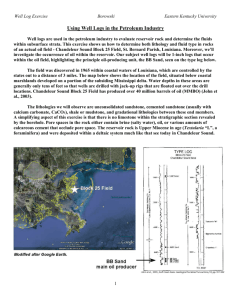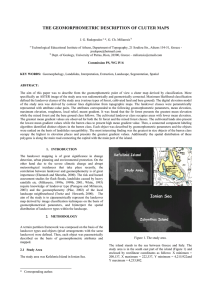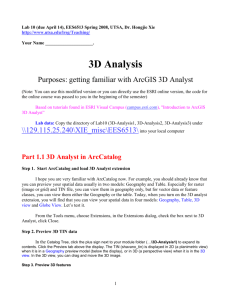Rivers Inquiry Lab
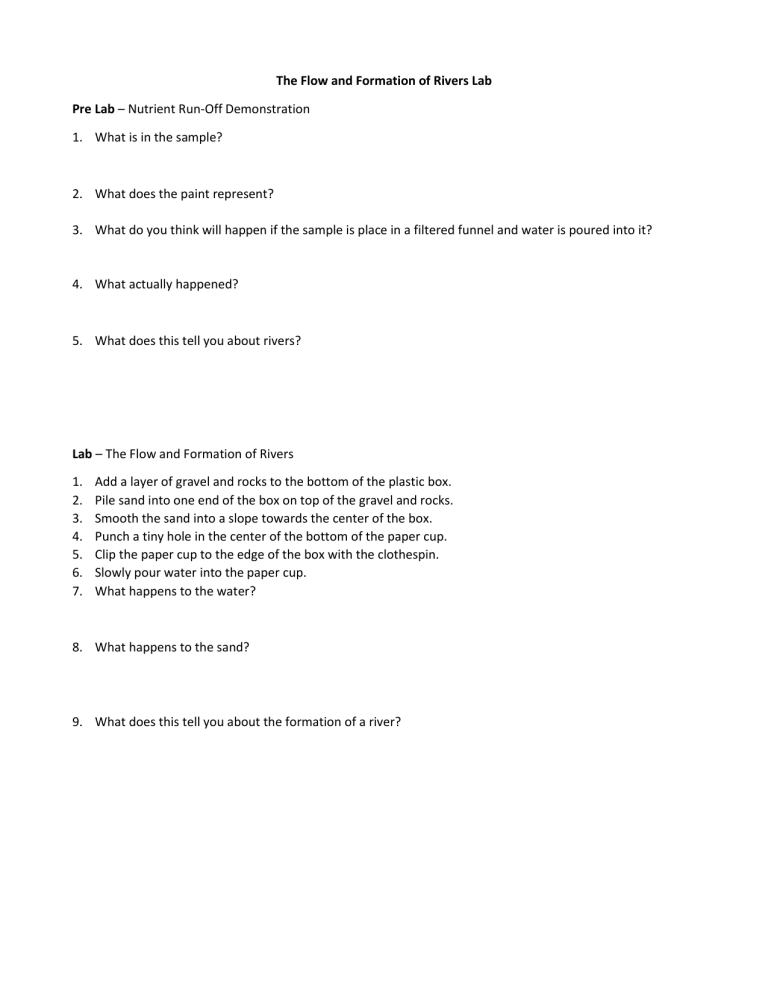
The Flow and Formation of Rivers Lab
Pre Lab – Nutrient Run-Off Demonstration
1.
What is in the sample?
2.
What does the paint represent?
3.
What do you think will happen if the sample is place in a filtered funnel and water is poured into it?
4.
What actually happened?
5.
What does this tell you about rivers?
Lab – The Flow and Formation of Rivers
1.
Add a layer of gravel and rocks to the bottom of the plastic box.
2.
Pile sand into one end of the box on top of the gravel and rocks.
3.
Smooth the sand into a slope towards the center of the box.
4.
Punch a tiny hole in the center of the bottom of the paper cup.
5.
Clip the paper cup to the edge of the box with the clothespin.
6.
Slowly pour water into the paper cup.
7.
What happens to the water?
8.
What happens to the sand?
9.
What does this tell you about the formation of a river?
Math Connections – Calculating Gradients
1.
If a stream starts at an elevation of 4,900 m and travels 450 km downstream to a lake that is at an elevation of 400 m, what is the stream’s gradient?
(Start Elevation – End Elevation) / Distance
(4,900 m – 400 m) / 450 km
4,500 m / 450 km
10 m/km
For every kilometer, the slope of the river is dropping by 10 meters.
2.
If a stream starts at an elevation of 3,500 m and travels 300 km downstream to a lake that is at an elevation of 300 m, what is the stream’s gradient?
3.
If a stream starts at an elevation of 5,200 m and travels 200 km downstream to a lake that is at an elevation of 200 m, what is the stream’s gradient?
4.
How much moving water does it take to knock an adult off their feet? a.
15 cm b.
30 cm c.
1 m
5.
How deep does moving water have to be to sweep away a car? a.
More than 2 m b.
At least 1.5 m c.
Less than 1 m
6.
What does this tell you about the power of moving water? Why do we need flood warnings?
